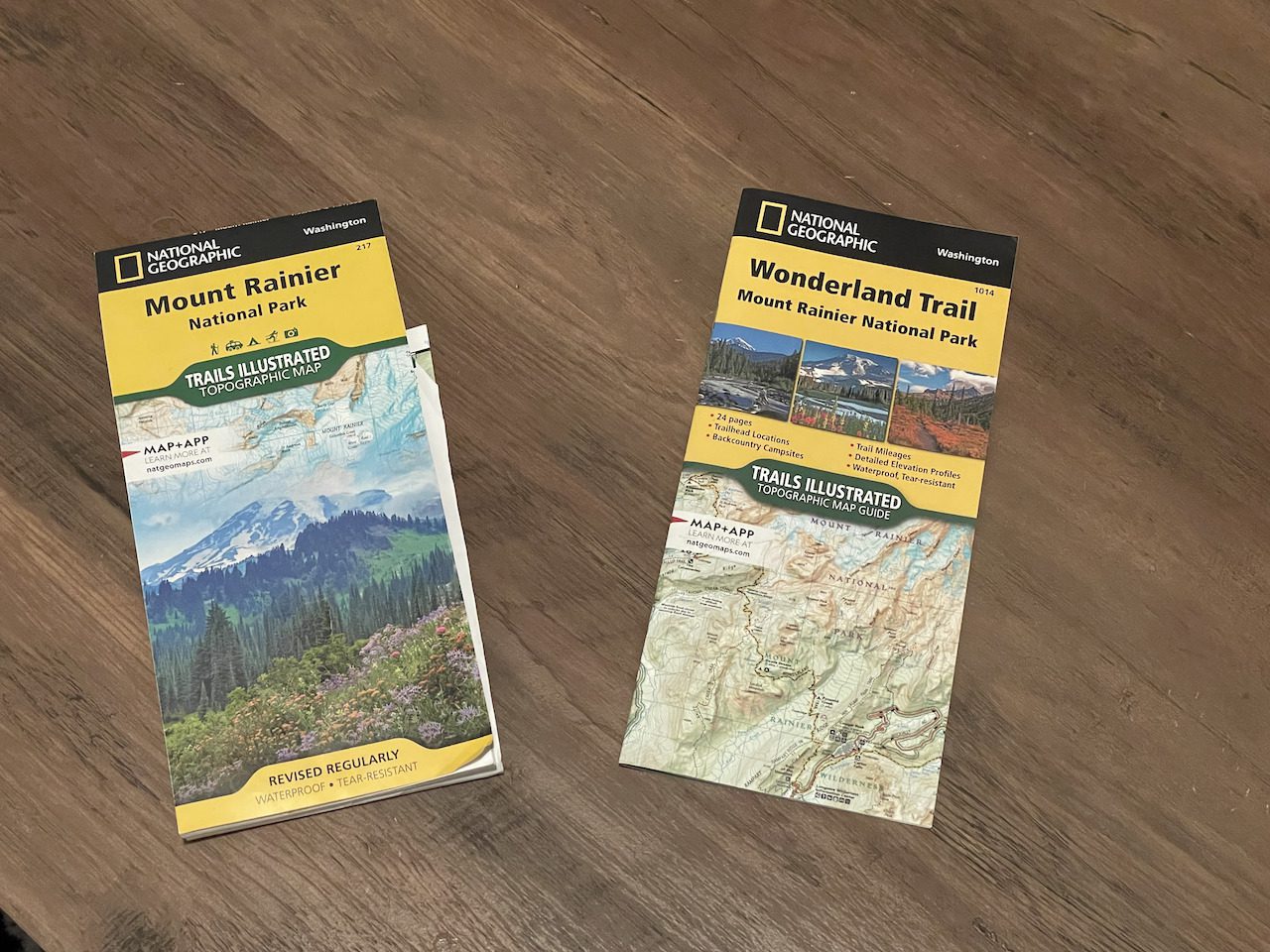What Is The Wonderland Trail?
The Wonderland Trail is a popular backpacking trek in Mt Rainier National Park that encircles the park’s dormant volcano, Mt Rainier. On this hike, you will get not only beautiful views of Mt Rainier but will also get to hike through lovely meadows, pristine sub-alpine lakes, views of Mt Helens and so much more! The Wonderland Trail is a very strenuous hike with a lot of mileage and elevation gain/descent. We will go over everything you need to know about the Wonderland Trail so you can prepare for your own adventure, so without further adieu, let’s get started!
Who Should Hike The Wonderland Trail?
The Wonderland Trail is a strenuous hike and should only be attempted by individuals with backpacking experience and basic outdoor skills. The trek is lengthy at 93miles with 22,000ft of total elevation gain and descent, and this is not a hike you do coming right off the couch. If you want some tips on how to improve your hiking endurance, you can take a look at our post.
When Is The Best Time Of Year To Hike The Wonderland Trail?
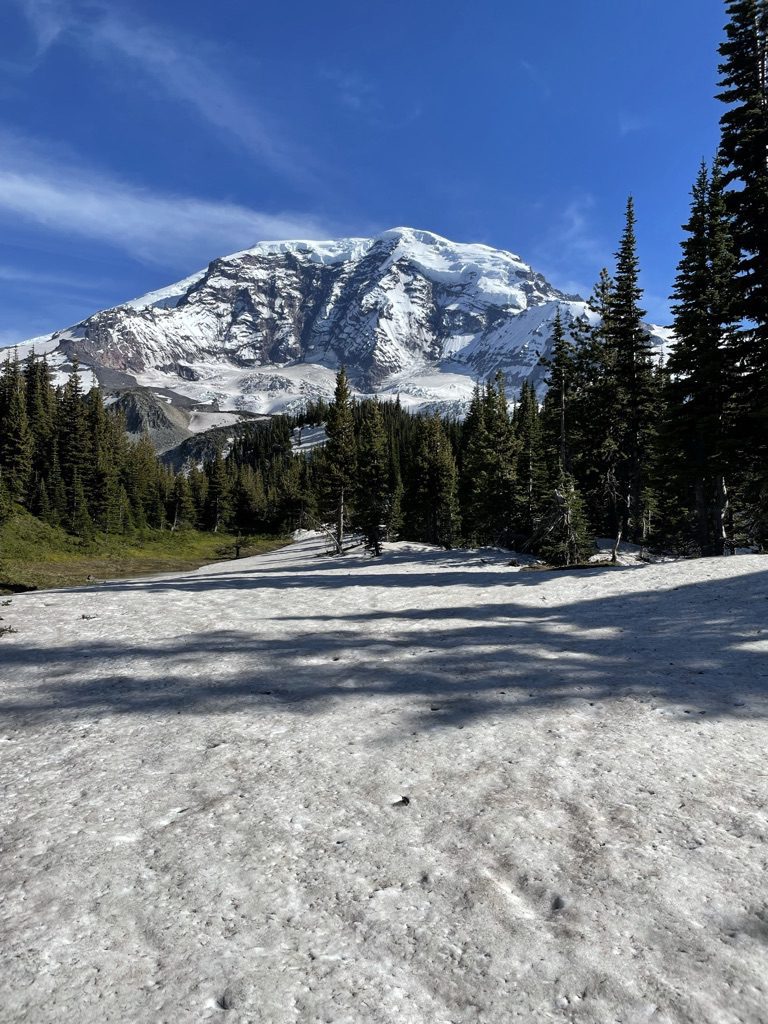
If you are shooting to hike in the best weather and avoid snow-covered trails, I recommend doing this trail from mid-July to early September. I made the error on my attempt to hike the trail in mid-June, where much of the park was still covered in snow, requiring us to hike with snow gear and deal with a whole lot of postholing!
How To Plan Your Own Wonderland Trail Backpacking Adventure:
- Decide if you want to go clockwise or counterclockwise
- Figure out how many days it would take for you to hike the trail confidently.
- Pick a starting location.
- Plug your information into Wonderland Guides. This is a very helpful website that takes the legwork out of planning a Wonderland Trail Itinerary.
- Plan where you want to cache your food along the trail.
- Make sure you can secure permits for your intended itinerary. This may require some flexibility on your end if you do not have available permits for your planned itinerary.
- Have the right gear.
Hike The Wonderland Trail Clockwise Or Counterclockwise:
The classic direction for the Wonderland Trail is clockwise, typically starting and ending in Longmire Ranger Station. I do not believe it matters which direction you decide on hiking this trail. I would just try to find out whatever works best for the permit situation you find yourself in, then go with that.
Where To Start Hiking On The Wonderland Trail?
There are three major trailheads with available parking and camping nearby to start your wonderland trail trek. These are as follows:
- Longmire
- Mowich Lake
- White River
How To Get Permits For The Wonderland Trail:
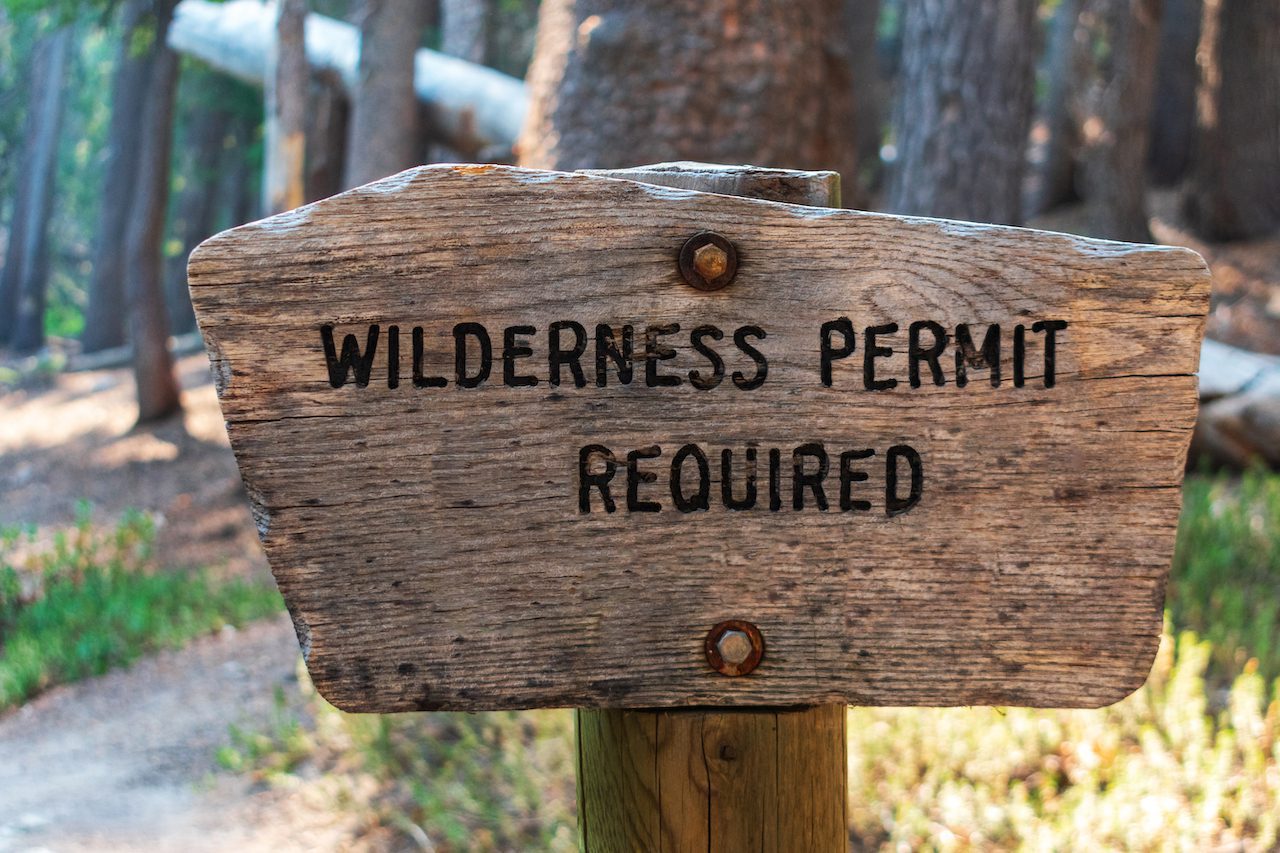
There are three ways to obtain backcountry permits for the wonderland trail.
- Reservation: Mt Rainier National Park allocates two-thirds of their backcountry permits for reservations, during the summer season. Reservations can be made on recreation.gov starting on April 27th where you can make reservations from June 1st to September 30th. All reservations must be made 2 days prior to the start of your trip. Permits cost about $26.00 per a trip with a maximum of 13 days.
- Walk-Up Permits: Mt Rainier National Park allocates the remaining one of third of their backcountry permits to walkups. Walk-up permits can be obtained no earlier than one day prior to the start of your trip, and can only be issued at one of the park’s wilderness information centers. There is a non-refundable $6.00 fee for walk-up backcountry permits.
- Early-Access Lottery: Because the Wonderland Trail is such a popular attraction for the park permits are in extremely high demand which prompted the park to start a lottery This lottery is the BEST way to obtain permits for the Wonderland Trail because it allows you to make reservations before anyone else for the season. The lottery is typically open during the first couple of weeks in March, be sure to check the NPS website, for the latest lottery information.
***Keep in mind ALL permits must be activated at a ranger station to confirm your information, as well as go over safety, food storage and route information. Your Permit must be with you at all times when hiking, if you run into a ranger they will ask to see your permit information.
Can You Hike The Wonderland Trail Without A Permit?
Yes.
While only recommended for veteran ultralight backpackers as you have to hike the trail in three days. You would have to stay at three front-country campgrounds including Mowich Lake Campground, Cougar Rock Campground, and White River Campground. Mowich Lake is a free campground all you have to do is register in the parking lot, then for Cougar Rock and White River Campground each cost $20.00 to camp for the night. The nice thing about these campgrounds is that they are relatively spaced out from each other.
- Cougar Rock Campground to Mowich Lake: ~36 miles
- Mowich Lake to White River Campground: ~26 miles
- White River Campground to Cougar Rock Campground: ~33 miles
Food Caches On The Wonderland Trail:
With over 93 miles of hiking fortunately the park has several locations where you can cache your food and fuel. You have the option of either mailing your cache to your desired destination or bringing it yourself to the ranger station. You want to use a sealable plastic container and properly label your cache with the name of the permit holder, where the cache will be picked up, when the cache will be picked up, and the permit number.
The areas where you can cache food are:
- Longmire Wilderness Information Center (Fuel must be stored separately from cache)
- White River Campground
- Sunrise Old Gas Station
- Carbon River Ranger Station
Preparing For Wonderland Trail Conditions:
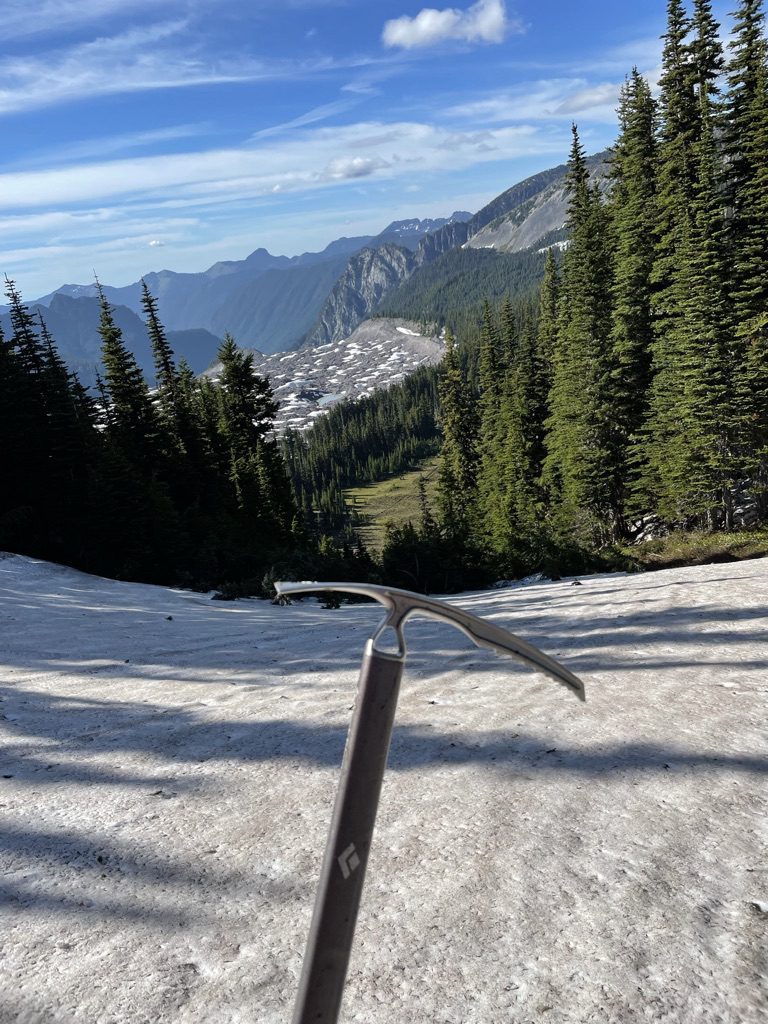
Mountain weather conditions are always rapidly changing and Mount Rainier is certainly no exception. Be sure to properly research and study the trail conditions prior to setting out on your trip. A few ways you can do this is by reading through trip reports of people who recently hiked the trail or by reaching out to the ranger station to inquire about the most recent scouting reports of various parts of the park. I especially encourage the latter as this is often some of the most accurate and up-to-date information regarding the trail conditions.
Backpacking Gear For The Wonderland Trail:
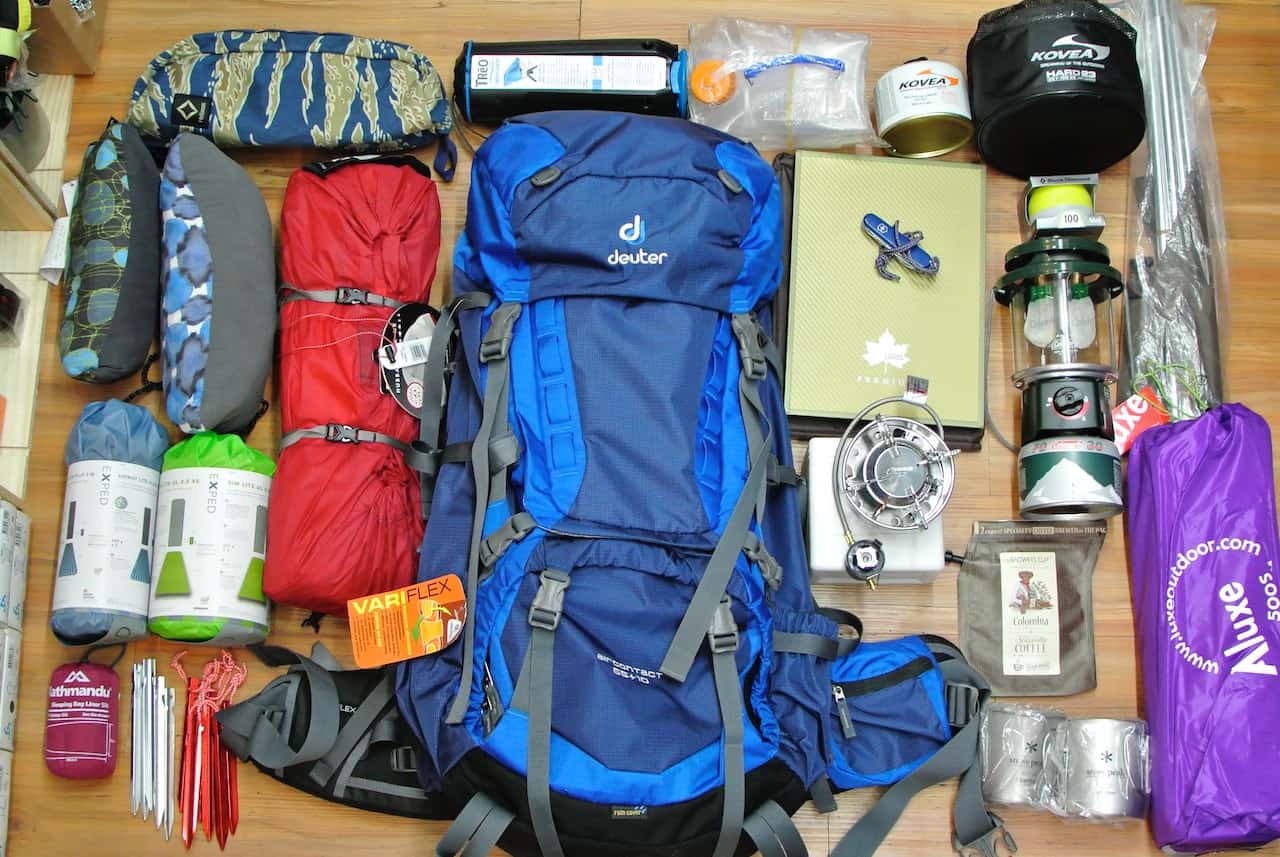
You would need the standard backpacking gear as on a typical backpacking trip. Refer to our backpacking checklist to ensure that you have everything you need for your hike. If there is a chance you will be hiking in the snow, I would highly recommend snow gear, including an ice-ax, crampons, and GPS navigation.
Get the most up-to-date maps! Because of the harsh climates in the park, there can be changes to the trail or detours that are necessary depending on environmental factors. I would recommend purchasing the latest National Geographic topographic map of Mount Rainier National Park.
On our backpacking gear blog, you can check out some of our highly recommended gear for your Wonderland Trail adventure.
I Hope This Helped!
I hope we answered all of your questions about hiking the Wonderland Trail! Please feel free to reach out if you have any other questions about the trek.


